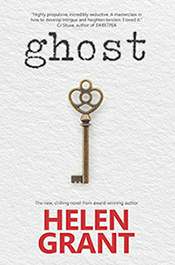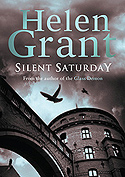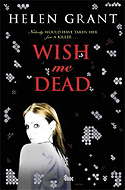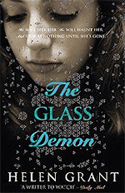UPDATE! (13th Feb 2014) I am delighted to say that you can now listen to a podcast about Marcilly-le-Hayer and M.R.James' story fragment, recorded by the excellent A Podcast To The Curious. Regular podcasters Will and Mike, plus myself, discuss the story fragment and the location and related Jamesian things. If you have a little spare time, do listen - these podcasts are always great fun and easy to listen to.
Meanwhile, you can still read my original article about Marcilly-le-Hayer below.
-------------------------------------------------------------------------------------------------------------------------
As regular readers of this blog will know, I am a great fan of the English ghost story writer M.R.James, and have previously published some of my articles about his work (and particularly the story locations) here.
All my articles about M.R.James first appeared in the excellent M.R.James Ghosts and Scholars Newsletter, edited by Rosemary Pardoe. The Newsletter has its own extensive website, upon which a number of my articles are reproduced, but some of the more recent ones have only ever appeared in the print version and have therefore been available to a limited audience. This includes an article I wrote in 2010 describing a visit to the French town of Marcilly-le-Hayer, mentioned in Stories I have tried to write. As the issue in which it appears is now out of print, I am posting it on my blog, with kind thanks to Rosemary Pardoe both for first publishing it, and for agreeing to its reappearance here.
The M.R.James Ghosts and Scholars Newsletter is printed in black and white in chapbook format, and I am therefore delighted to say that I can now include more photographs than originally appeared with the article, all in colour! NB If you like this article, do check out the Ghosts and Scholars website, which is a fabulous resource on all things Jamesian, and consider subscribing to the printed newsletter, which now also includes fiction in the tradition of M.R.James as well as non-fiction articles.
"Places I have tried to visit": Marcilly-le-Hayer
by Helen Grant
In his essay Stories I have tried to write (1929) M.R.James outlined a tale concerning the French town of Marcilly-le-Hayer. An earlier story draft was very much more recently published, in Ghosts and Scholars 22 in 1996 and in a revised and corrected form in The M.R.James Ghosts and Scholars Newsletter in 2006.
The two versions of the story have broadly the same plot: a traveller in France purchases an old book and is reading it on a train; in the same compartment is a Frenchwoman of mature years. A conversation reported in the book deals with a woman living at Marcilly-le-Hayer, whose husband has disappeared under mysterious circumstances. The traveller subsequently visits Marcilly-le-Hayer; opposite his hotel is a house, apparently quite an impressive house, with three gables. The house belongs to a widow whose husband vanished, as in the conversation in the book; the conversation is then discovered never to have appeared in the novel at all.
The road to Marcilly-le-Hayer is paved with good intentions. I had long wished to visit the town, scene of an embryonic MRJ story, but had never managed to put the intention into action. I had even booked a trip to the area on one occasion, only to cancel at short notice when one of the party fell ill. Having visited the locations of other MRJ stories – Steinfeld, St. Bertrand de Comminges and Viborg – I felt sure that Marcilly, like them, must offer something intriguing in the way of history, architecture or legend. Amendments to MRJ’s story draft suggest that he may have originally intended to set the story elsewhere, since he mentioned Moulins and Nevers (later changing Nevers to Troyes). This implies that there was something peculiar to Marcilly which interested him. But what?
Internet searches about Marcilly offered no clue. The town seemed rather inaccessible – just too far from Paris for a combined trip and with no railway station. Most information about the sights of the town itself seemed to focus on the ancient dolmens, which still stand in the fields close to Marcilly – objects outside MRJ’S usual period of interest and unlikely to be counted amongst the "interesting buildings in and near Marcilly" which his traveler goes to see in the story draft.
Above: the intriguingly-named Dolmen de Vamprin, which lies in a field of oilseed rape to the west of the town and is reached by a deeply-rutted farm track lined with blackthorn hedges. It was classified as a historical monument in 1936.
Finally in May 2010 I was able to satisfy my curiosity. We spent a week in Fontainebleau, and from there we were able to make a day’s excursion by car to Marcilly. Looking at the map as we travelled, I was a little perplexed. From MRJ’s descriptions of Marcilly-le-Hayer as a town with a "Grande Place", houses with pretensions, interesting buildings and so forth, I imagined at the very least a moderate sized market town, whereas the tiny dot on the map suggested nothing larger than a village. As we approached Marcilly we passed through rolling fields of crops – rape and barley, with a few red poppies at the edges of the fields. There was no sign of a town ahead – nothing in fact but farmland. No other cars passed us. I began to wonder whether we had made some kind of mistake.
Finally, as we crested a small rise and descended on the other side, we came to a faded road sign reading Marcilly-le-Hayer. A few minutes later we were passing through the town. We saw a boulangerie, and a pharmacy, both closed, and a church set back behind a little tree-lined square. We saw nothing that could be described as a "Grande Place." A minute or two later we found ourselves on the other side of the town, driving back out into open countryside. Confounded, we turned the car in a small farm track and drove back into the town.
Since the only recognisable square was the small Place des Tilleuls in front of the church, we parked there and got out to explore on foot. The church - L'église Saint Loup de Sens – proved to be locked, nor were there any clues to be found in the churchyard. Disappointingly, not one gravestone bore the names Giraud or Dupont, suggesting that MRJ had not taken his inspiration there. I could not see any building in the church square that might correspond to the house with three gables described in the story. There were some semi-ruined buildings at the side of the churchyard that might have had any number of gables in the past; it was difficult to say now. Opposite the church and on the other side of the road were several large buildings, one of which might conceivably have been an inn in the past judging by its large arched gateway, but which now houses the pharmacy (below).
Whilst we were wandering about the square, two mature ladies arrived to tend the graveyard. I accosted them and and explained what I was about in my best French. Apparently completely unaware of MRJ’s connection with Marcilly, they were a little nonplussed by my interest but nonetheless very willing to help; the pharmacy had not been an inn, they explained, but a casino. As regards the square and the inn, there was a bigger square around the corner, and there I might find the Auberge de l'Espérance.
We went in the direction the women had suggested and found ourselves in front of the Auberge; on a wall nearby was a plaque reading Place de l'Espérance. We had passed through the square on our way through the town without realizing it was one; the curve of the modern main road across it had so disfigured the square that it was no longer recognisable as such. At any rate, here was an inn; but was it the inn from the story, and where was the house with the three gables?
I took out my camera and began to take some photographs of the buildings around the square. Half a minute later I was hailed loudly in French. I looked around; in the corner of the square was what appeared to be an old farm building, with tractors parked in its courtyard. Behind the railings was a middle-aged man dressed in green workman’s overalls; he was the one who was calling me. I suppose that he thought I was up to no good in some way; at any rate I went over to explain what I was up to. He had not heard of M.R.James, any more than the ladies who tended the churchyard, however, he was interested in my researches and suggested I try talking to an old woman who lived a little way up a nearby street, running to the south east of the square. She lived in the house with the tall chimney, he told me, pointing; and he waited to see that I was making for the right one before he went back into his courtyard.
Feeling a little apprehensive about imposing on an elderly stranger, I nevertheless went to the house he had suggested. There was a gate bearing the name of Madame P----- on it, leading into a little courtyard, and to the right was the house. The front door was open; I knocked as loudly as I could and called out. Madame P----- appeared at the doorway; she was a handsome old lady , neatly dressed and quietly spoken. Once again I explained what I wanted. She listened without much surprise. She told me that the inn had always been there, as far back as she could remember; the building next door had been the gendarmerie. I asked her rather tentatively how old she was; she seemed a little taken aback but told me that she was 91 years old – born, therefore, before MRJ penned Stories I have tried to write.
I returned to the square, feeling more confident that the Auberge de l'Espérance was the inn in the story; however, where was the house with the three gables? Out came Monsieur in the green overalls again; had I spoken with Madame P-----? he asked, and had she shown me her book, with photographs of the town in the past? She hadn’t? What a shame, he said; it was such a beautiful book. He was much interested in the question of the house with three gables. I explained that the house should be opposite the inn; there was indeed a house there, large though not particularly prepossessing, with what appeared to be the remains of stables at the right hand side of the courtyard. I could not identify three gables unless I had misunderstood what was meant by gables, however, Monsieur offered to go and speak to the owners and see whether they would talk to me or let me view the house. He crossed the road and marched into the house without knocking; a few minutes later he came out shaking his head. The owners didn’t want to see anyone.
I asked myself whether there were any other candidates for the house with three gables. There were the buildings on the corner of the square, from which my new acquaintance with the green overalls had issued forth; might they be described as “opposite” the inn? I thought perhaps they might; at any rate they were clearly visible from the inn’s front door. There was a long, low house and several buildings running along the opposite side of the courtyard, which might have been stables, with exposed wooden beams and a paved floor. But what of the three gables? I consulted Monsieur again on the subject; the house only had two, he agreed, but it had had to be reduced when the road through the square had been built. Previously it had extended to the corner of the courtyard. Impossible to say whether it might have been the model for the house in the story in its original state; at any rate it was not to be ruled out.
I left Marcilly feeling baffled. I had found possible originals for the inn and the “house of some pretensions” but little else; nothing to show what in this nondescript and quiet little French town could have inspired MRJ’s story draft. What Marcilly has to offer is not to be compared with the splendid treasures of St. Bertrand de Comminges or the astounding history of Steinfeld Abbey and its stained glass.
Above: The Place de l'Espérance today.
A postcard from 1909 shows the Place de l'Espérance with the now-truncated building on the corner in its original state, although it is not possible to see whether it had three gables or not at that point. The square has had many different names over the years, including Place de la Gendarmerie and Place des Hôtels. At no point was it named the Grande Place, although before the building of the main road through it the square did give a grander impression than it does nowadays.
I spent a number of hours studying the old postcards reproduced in Mme. Subirà-Puig’s book, particularly those of the square, and it was at the end of a particularly frustrating afternoon’s work that I noticed something I had overlooked before, perhaps because I had assumed that the Auberge de l'Espérance was the inn featured in MRJ’s story draft. Two of the photographs show a second inn on the square. This was the Hôtel du Cuirassier Français, owned by Monsieur L.Borgne. According to the book, the hotel disappeared after the war when its owner, a local character of some eccentricity, died. The building still stands but there is nothing nowadays to identify it as a former inn. What was opposite this building? This was more difficult to determine. There was no shot of the square in which both the inn and the building opposite could clearly be made out, however there was a postcard from around 1900 in which the Auberge de l'Espérance is identifiable; the building two doors down must therefore be the Hôtel du Cuirassier Français, although the lettering is illegible at the distance and angle at which the photograph was taken. Opposite the hotel is a large and imposing house with three prominent gable dormer windows. The same house can be seen at closer quarters in a second postcard confusingly titled Marcilly-le-Hayer - Rue des Hôtes.
I did not remember seeing such a house when we visited Marcilly. Was it possible that I had overlooked it? It seemed unlikely. By the time I made the discovery we had long since returned home from France; attempts to check whether such a building still existed via satellite pictures were inconclusive. I went through the photographs we had taken of the square. Here was the house whose occupants had refused to speak to us; but what was the building next to it? In my photographs I could just pick out a rather smaller house than the one I was looking for, apparently set further back from the road. Did this small house replace the one with the three gable windows, or was it its neighbour? Closer inspection showed that the house with the uncooperative residents had a distinctive chimney. In the postcard dated 1900 the very end of this house, with the chimney clearly visible, appears next to the house with three gable windows. Evidently the house with the gables had been knocked down, perhaps when the main road was laid through the square, and replaced by the smaller one. This was confirmed by once more comparing my own shots of the square with the postcard; the house with three gables, if it were still standing, should have obscured part of a distinctive house at the north end of the square, but in the modern photograph that house is completely visible.
I feel personally convinced that the inn featured in the story draft is the Hôtel du Cuirassier Français, and that the house with the three gables is the now-vanished house which stood opposite. The question of quite what it was which inspired MRJ remains more difficult to answer. The fact that the town was able to support two inns is demonstrative of the fact that it was a major staging post at the end of the nineteenth century. We may therefore assume that the town had a throughput of travelers disproportionate to its small population. Perhaps it was this very transience which suggested the idea – implied in the story – of an undiscovered murder with a commercial motive. The bustle and energy of such a staging post is long gone today; the town slumbers as deeply as the traveler on the train in MRJ’s story draft.
One thing remains to mention: the Hotel Terminus in Troyes really did exist. It stood on the Boulevard Carnot and was used by the German commandant during the Occupation. It was subsequently replaced by the Royal Hotel, which still receives guests to this day. As far as I can tell, however, it was never known as the Hotel des Ambassadeurs; this appears to be an invention of MRJ’s.
Above: War memorial in the town: no Girauds or Duponts here either.








No comments:
Post a Comment